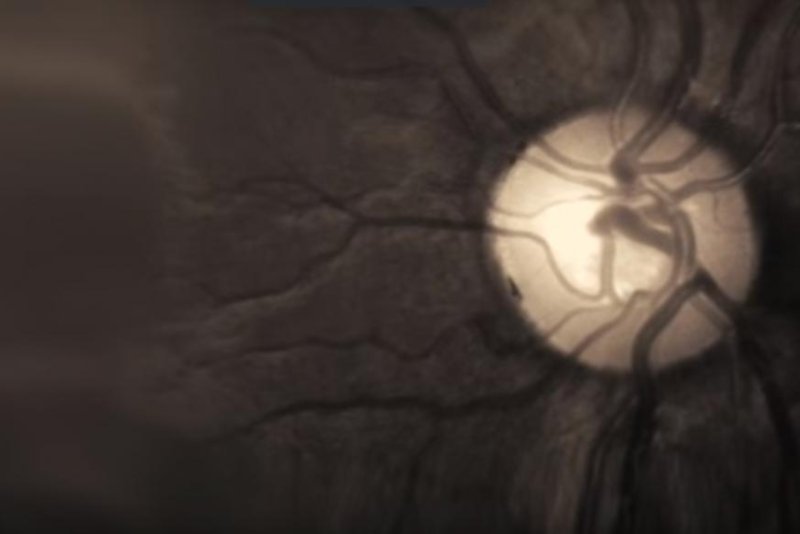Measuring changes in the reflection of light off the retina may allow doctors to detect Alzheimer's disease long before symptoms are apparent, allowing it to be treated, according to researchers at the University of Minnesota. Photo by University of Minnesota
MINNEAPOLIS, July 12 (UPI) -- A simple eye test may help doctors diagnose Alzheimer's disease years before its effects can be seen in patients, and could make it possible to test drugs for treating or preventing the disease's development.
Researchers at the University of Minnesota found differences in patterns of light reflection off the retina changed progressively in experiments with mice as they developed Alzheimer's disease, suggesting it can be detected long before symptoms are apparent to patients or doctors.
There is no definitive test for Alzheimer's disease, which is diagnosed based on a set of symptoms. Evidence of amyloid plaque build-up in the brain, which scientists have tied to progressive decline of memory and cognitive skills typical of the disease, appears to be detectable using a specialized device.
Researchers at the University of Minnesota's Center for Drug Design say the brain and retina undergo similar changes due to Alzheimer's -- the two are connected, because they are both part of the central nervous system -- but since the retina is easily accessible, changes are much easier to see.
"We saw changes in the retinas of Alzheimer's mice before the typical age at which neurological signs are observed," Dr. Swati More, an assistant professor at the Center for Drug Design, said in a press release. "The results are close to our best-case scenario for outcomes of this project."
For the study, published in the journal Investigative Ophthalmology and Visual Science, the researchers designed a spectral imaging system using a machine vision camera and tunable wavelength system to measure the reflection of light off retinas of mice.
Comparing the differences in light reflection in mice with Alzheimer's and age-matched wild-type mice without the disease from the age of 3 months to 8 months, researchers found mice with the disease had reductions in the amount of light reflecting off their retinas.
With changes in light reflection indicating amyloid buildup in the retina, and thus in the brain as well, the disease may be detectable long before memory and cognitive declines are apparent.
The researchers plan to start a phase 1 clinical trial of the retina imaging device with humans this month and hope what they describe as an inexpensive diagnosis method could lead to treatment of the condition, rather than just managing its symptoms.
In order to treat the disease, Dr. Robert Vince, director of the Center for Drug Design, said therapy would need to be administered before patients have signs of the disease -- and until now the possibility for testing the efficacy of a treatment was impossible because there has been no diagnostic tool to measure its effects.
"Using currently available detection methods, you have to wait until the plaque is formed to identify Alzheimer's disease," Vince said in a press release. "This technology is a noninvasive way to identify Alzheimer's disease before plaque is formed."















